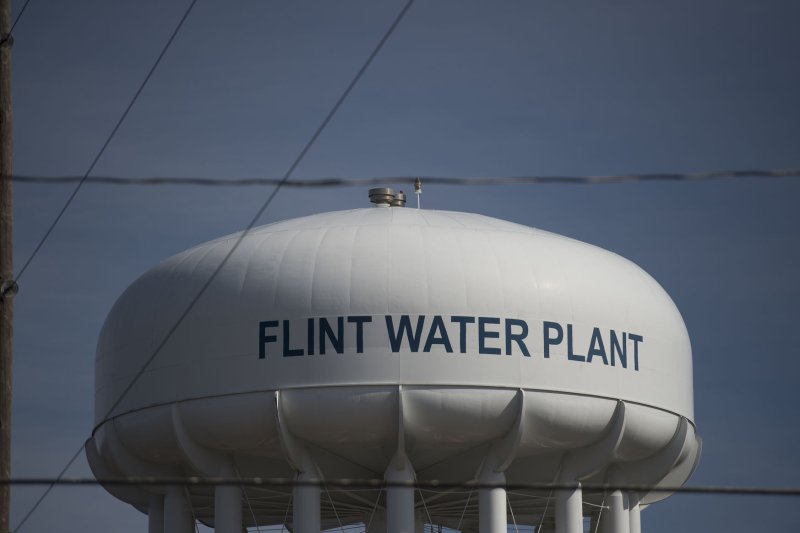A water plant tower is seen in Flint, Mich., on March 11, following the discovery of lead contamination in the city. Wednesday, the EPA released a report that details possible changes to a federal law limiting the amount of lead and copper in drinking water. File Photo by Molly Riley/UPI |
License Photo
WASHINGTON, Oct. 26 (UPI) -- U.S. environmental regulators are working on changing a quarter-century-old federal law concerning lead contamination in the nation's drinking water --with the aim of avoiding another crisis like the one in Michigan.
The Environmental Protection Agency released a report on Wednesday that outlines potential plans to overhaul the lead and copper rule.
The agency has been working on changes to the law for years, but this year's water contamination in Flint, Mich., has made that prospect even more pressing for regulators.
"Exposure to lead is known to present serious health risks to the brain and nervous system of children," the report states. "The recent crisis in Flint, Michigan, has brought increased attention to the challenge of lead in drinking water systems across the country.
"Lead and copper enter drinking water mainly from corrosion of lead and copper containing plumbing materials."
Flint's water became contaminated by old lead pipes, EPA investigators found, and sparked a nationwide outcry over the safety of similar pipe systems across the United States.
The EPA said that its lead regulations in prior decades has greatly benefited residents' safety, but acknowledged that revisions are necessary.
Some of the proposed changes include calling for more aggressive replacement of old lead pipes, upping requirements for corrosion technology, changing sampling methods and increasing focus on lead exposure to pregnant women and children.















